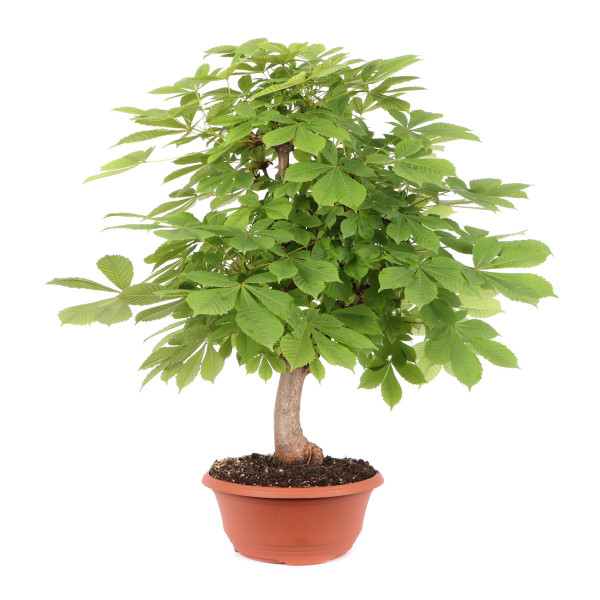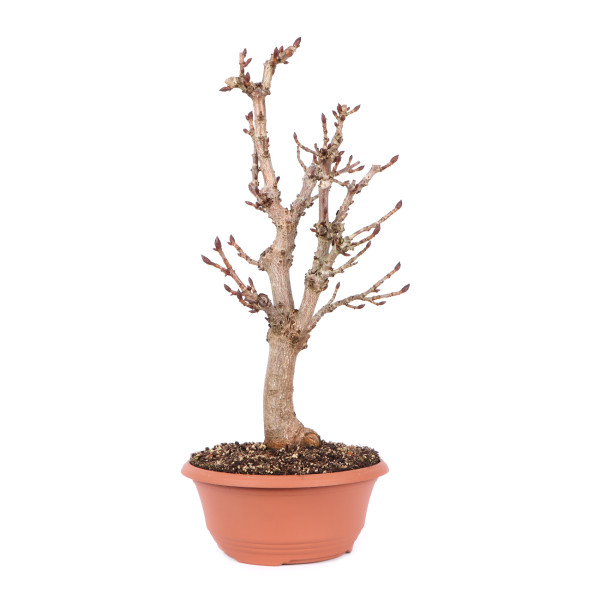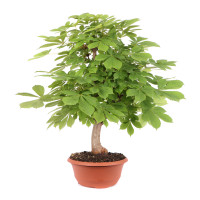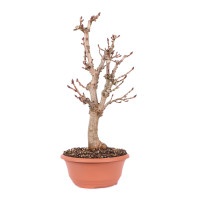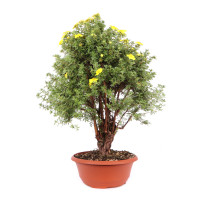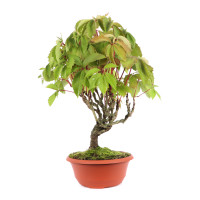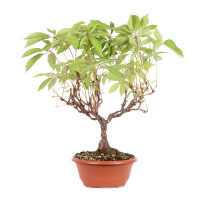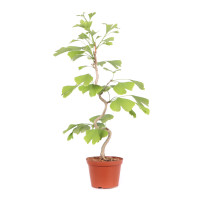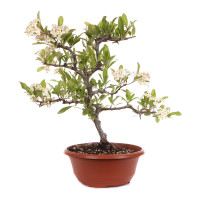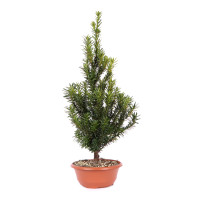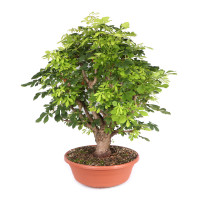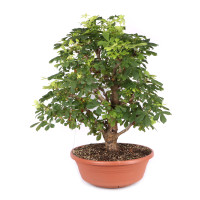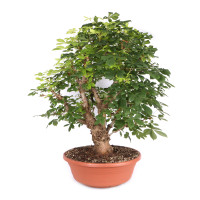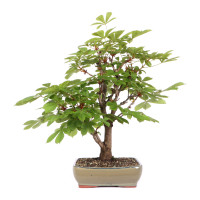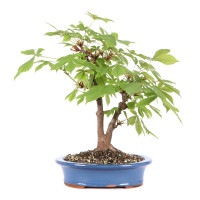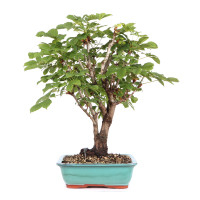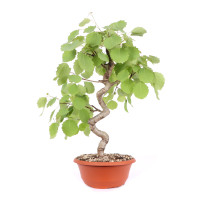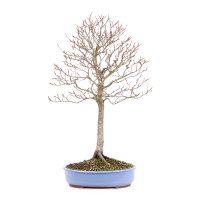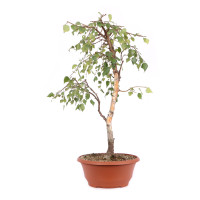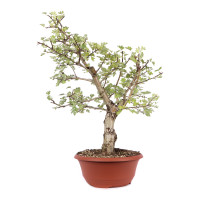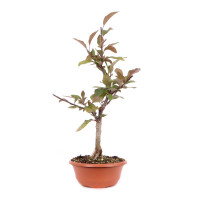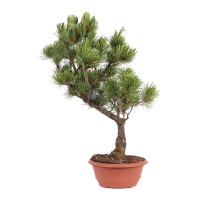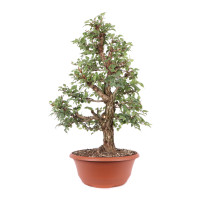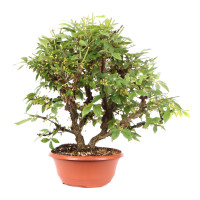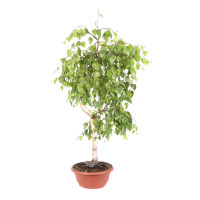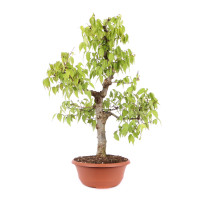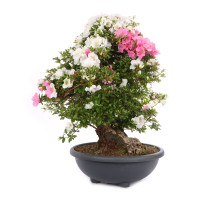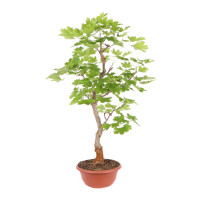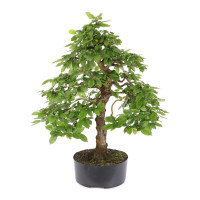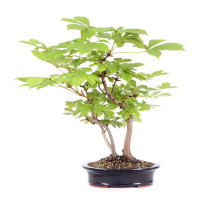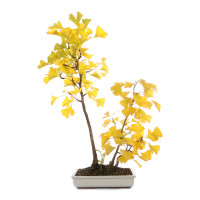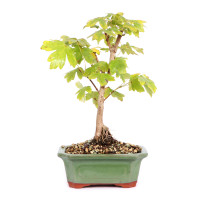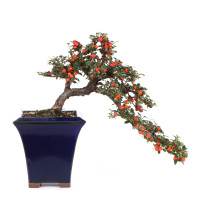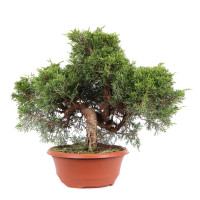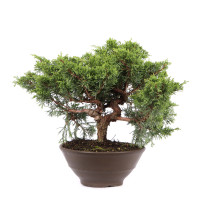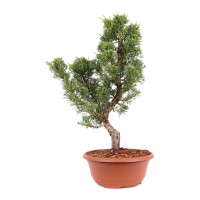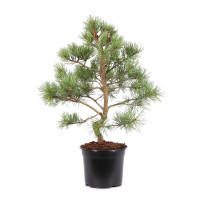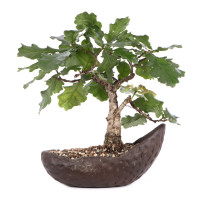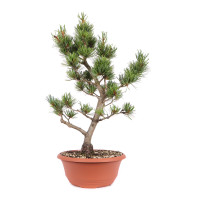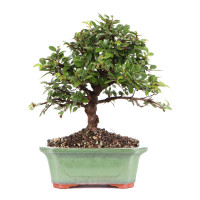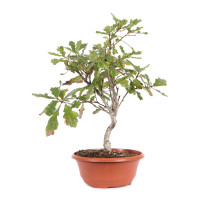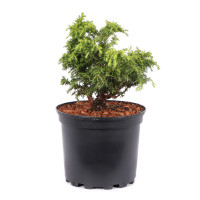- Order number: 1075-P-25-0419
- Height: 65 cm (incl. pot)
- Foliage: deciduous
- Bonsai Pot: plastic pot
- Year: 2010
- Origin: Germany
Aesculus hippocastanum - Common Horse Chestnut
General:
The genus "Aesculus" was detected in Central Europe as early as the Young Tertiary over 23 million years ago! With the beginning of the Ice Age, however, it was displaced from there and the horse chestnut then found its natural occurrence in northern Greece, Albania, southern Yugoslavia and eastern Bulgaria. It has been naturalized in Central Europe since the 16th century and is often found here today as a park, city or avenue tree. The horse chestnut grows into a tree that is up to 30 meters high, often multi-stemmed, with branches that tend to overhang in a picturesque way when old. The leaves of the chestnut are palmate and 5- to 7-part. The autumn color is bright yellow to orange. A special ornament are the upright, white and yellow-red speckled flower panicles that cover the tree in May.
Care as a bonsai:
Even if some authors skip chestnuts in their books or even are of the opinion that chestnuts cannot be made into bonsai, we take the opposite view. The design is certainly not very easy, but that is precisely where it is particularly attractive. There are many red Japanese maples and Japanese pine trees, but not chestnuts. You have to start early with the design of the bonsai, because if you let the chestnut grow as it wants, it will be one meter high after a year. It has been shown that removing the thick, sticky summit bud in autumn strengthens the side buds and thus enables better branching in spring. If the branching is still not good, a complete leaf cut can be made in June. Shape cutting and wiring are then also possible. After about 2 weeks, the smaller after-shoot begins. During this time it is advisable to place the chestnut a little more shade, otherwise the location should be bright and sunny. As with all bonsai, regular fertilization and good soil are very important. Regular repotting is also important, as the chestnut has a very abundant root growth. In summer it can be attacked by leaf blotch disease or the leaf miner. A leaf cut is also recommended here. The chestnut is otherwise very robust and extremely hardy. Since the chestnut is one of the first trees to get its leaves in spring, it must be protected from late frosts.

